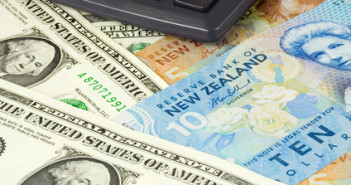With US equity markets at all-time highs and the VIX at lows not seen since February of 2007 after the positive Non-Farm Payrolls report on Friday, Asian stocks followed suit and traded higher over the course of their Monday session, buoyed by optimistic sentiment from Wall Street and stronger than expected GDP numbers out of Japan. The Nikkei climbed by 0.31% as Q1 GDP for the Japanese economy was revised to an annualized increase of 6.1%, up from the original print of 5.9%, and higher than the 5.6% analysts had been expecting.  The robust figures to begin 2014 are set to moderate as the second quarter sees growth contract under the weight of the newly introduced sales tax, yet the better than expected numbers from Q1 will keep the Bank of Japan at bay with further stimulus increases likely until the first economic results for Q3 start trickling in; making it more realistic that it could be closer to the end of 2014 until we see further action (if any) from the BoJ. The Yen traded within a narrow range for the majority of the overnight session, continuing to pivot around the unchanged mark in the mid-102s leading into the North American open.
After a week chalked full of central bank policy meetings and employment data, the upcoming week is expected to be less onerous on market participants, with the economic docket unlikely to greatly alter policy expectations. The new week should allow some time for participants to digest the developments of the previous one, while providing supportive evidence for developed economies well entrenched along their monetary policy paths – although a few exemptions to the aforementioned statement could be in the cards.
While the last few days have been busy for Western economies, the next few will be important for witnessing how the Chinese government is navigating the stabilization of its economy, as The Red Dragon sees trade balance, consumer prices, and industrial production figures, all hit the wires throughout the week. Trade balance figures for the month of May were released over the weekend, and does support the view offered by the recent string of modest PMI improvements that orders are picking up and there is signs of stabilization for the Eastern superpower. The trade surplus widened by a greater amount than had been expected, printing at $35.9bn after exports increased at a faster than expected clip of 7.0% on a y/o/y basis, while imports moderated and slipped by 1.6% compared to the last twelve months. The temperance of imports is not an encouraging signal for export driven economies such as Australia and Canada that rely on China’s demand for commodities, though the optimistic progression of export growth bodes well for the hypothesis that China will be able to follow through on its promises of a soft landing, and as such we’re seeing growth-correlated currencies outperform this morning. Tomorrow night we will see consumer prices numbers hit the wires, with an expectation May comes in with an increase of 2.4% on a y/o/y basis; a fairly comfortable level that shouldn’t worry the government about cracking down on targeted measures to help stoke regional lending.Â
Changing pace from an economy that is doing its best to stabilize to one that is looking ready to take off, employment figures for the UK are set to drop on Wednesday, with more improvement in the labour market expected to emerge. The claimant count for May is forecast to drop by another 25k bodies, while the unemployment rate in April is expected to slide to 6.7%, and if both numbers come in on target, should elicit further speculation more hawks will begin to materialize at the BoE, which could lead to dissent later in the year. That being said, like the North American numbers on Friday, the nuances of the report will be key to watch, as average weekly earnings are forecast to moderate to 1.2% on a y/o/y basis, and thus could give Carney a bit of breathing room when it comes to inflationary pressures and his time-line for interest rate hikes. Even so, subdued weekly earnings are unlikely to drastically change the trajectory of the Pound given its current environment, with GBPUSD looking to have completed its corrective price action in the high-1.66s, thus potentially getting ready for another assault of the 1.70 level where it was rebuffed in early May



